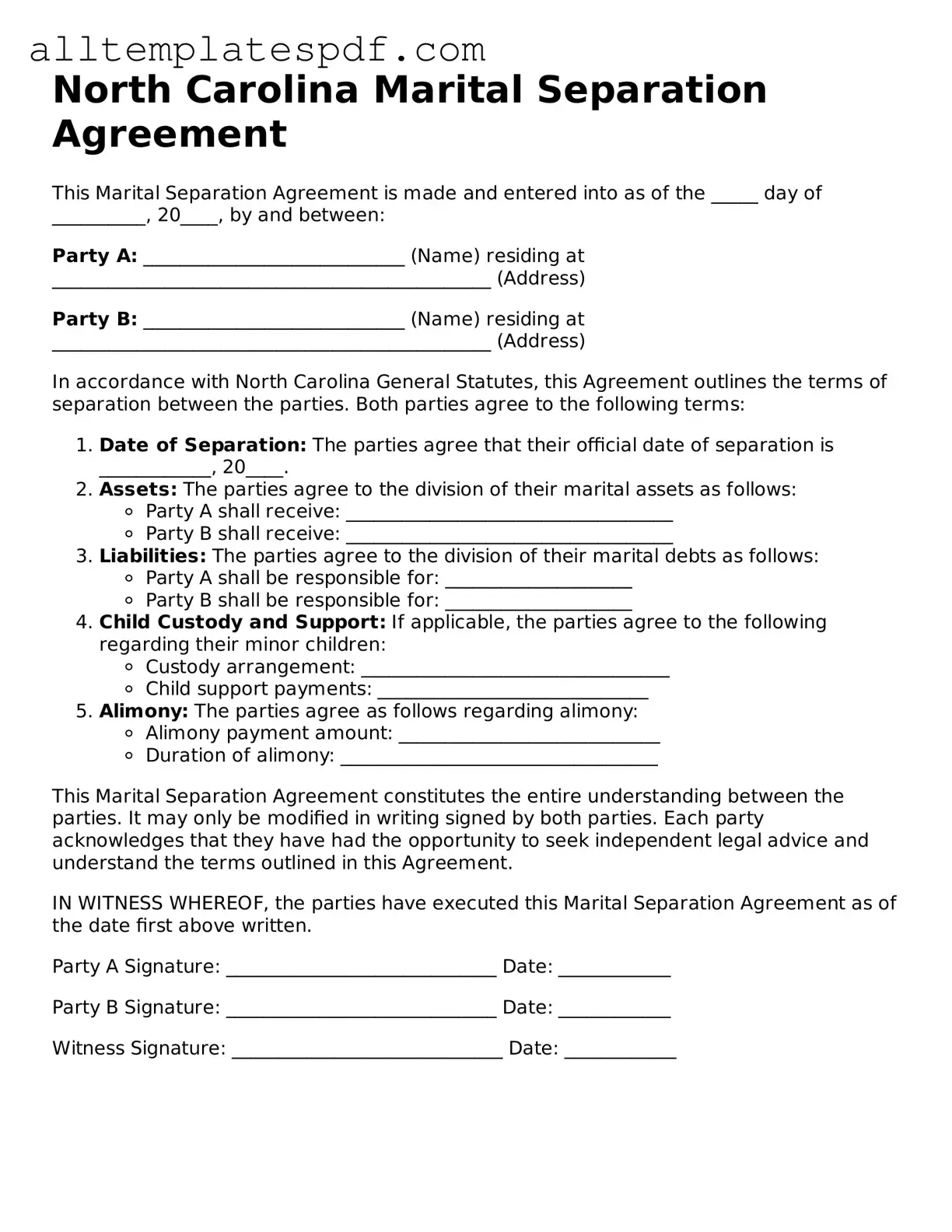Filling out the North Carolina Marital Separation Agreement form can be a daunting task. Many people make mistakes that can complicate their separation process. One common error is failing to provide complete information. It’s crucial to include all necessary details about both parties, such as full names, addresses, and any relevant financial information. Omitting this information can lead to delays or even disputes down the line.
Another frequent mistake is not clearly outlining the terms of the separation. This agreement should specify how assets and debts will be divided. If these terms are vague or unclear, it can lead to misunderstandings or conflicts in the future. Be specific about who gets what and how responsibilities will be shared.
People often underestimate the importance of addressing child custody and support issues. If children are involved, it’s essential to include a detailed plan for custody arrangements and financial support. Failing to do so can result in legal challenges later. Always prioritize the best interests of the children in the agreement.
Additionally, some individuals forget to consider tax implications. When dividing assets, it’s important to understand how these decisions might affect your taxes. For example, transferring certain assets can have tax consequences that may not be immediately apparent. Consulting with a tax professional can help clarify these issues.
Another mistake is neglecting to have the agreement reviewed by a legal professional. While it may seem like a simple form, the implications of what you include or exclude can be significant. An attorney can provide valuable insights and help ensure that your rights are protected.
Lastly, people sometimes fail to properly sign and date the agreement. This may seem minor, but without proper signatures, the document may not be enforceable in court. Ensure that both parties sign and date the agreement, and consider having it notarized for added legal weight.
